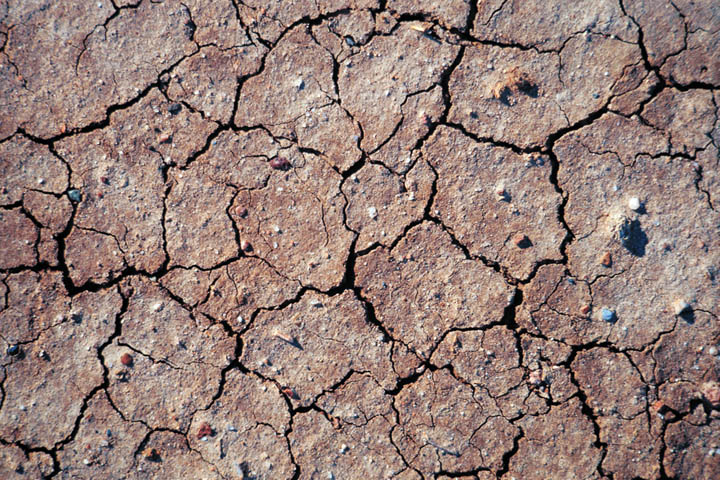
Parched Southwest readies for wildfires
Last year in Texas alone, a historic wildfire season of nearly 30,000 individual fires claimed 4 million acres and was devastating to property owners and natural resources, prompting state and federal officials to plan for another potentially active fire season this summer.

With the advent of May come typically higher mercury readings across the Southwest, and, as temperatures rise, so do concerns over related issues like drought and wildfire.
While winter and early spring rains have brought much needed relief to many farms and ranches, forecasters and producers alike know well it wouldn’t take much for conditions to deteriorate quickly, leaving the Southwest once again parched and dry.
While dry conditions can mean crop reduction or failure, stress on forage supplies and water shortages, it can also result in related problems that producers face, like the risks of wildland fires.
Last year in Texas alone, a historic wildfire season of nearly 30,000 individual fires claimed 4 million acres and was devastating to property owners and natural resources, prompting state and federal officials to plan for another potentially active fire season this summer.
The National Interagency Fire Center (NIFC) has issued their 2012 Fire Outlook Report and, depending on developing weather conditions, the report indicates there is a chance of another tough year of rangeland and forest fires which could tax state and federal firefighting resources again.
“The area we are most concerned about are parts of the Southwest and the western slopes of the Rockies,” said NFIC’s Ed Delgado in an interagency conference call. “We are looking at key factors such as sustained drought conditions and the effects of low snow impact and what [the dry] fuel state is at this point and how that will evolve in the weeks ahead.”
Delgado says it largely depends on the weather.
Uncertainty reigns
“There is a great deal of uncertainty in the global circulation pattern, the transitioning into a neutral pattern or the development of an El Nińo pattern, and that will have a dramatic impact on the outcome of the 2012 fire season,” he added.
Oklahoma Associate State Climatologist Gary McManus agrees. He says current conditions across most of Oklahoma are much better than they were a year ago.
“The rain in recent months has greened up pastures and has gone a long way in restoring moisture to parched areas of the state. But forecasters are warning of the risks of a summer without substantial rain. It wouldn’t take a lot for conditions to worsen quickly and put us back in the same trouble we found ourselves in last year,” McManus said.
Texas Ag Commissioner Todd Staples says much the same is true in Texas. Winter and early spring rains have been a welcome development, but he warns that drought conditions continue to prevail over large areas of the state. In response, he has established the Texas Wildfire Prevention Task Force to maximize wildfire prevention and mitigation strategies across the state.
“With a state as vast in size and as diverse in environment as Texas, we must be strategic in our wildfire prevention and mitigation efforts,” Staples said. “As Texas prepares for another potentially active wildfire season, it is important to ensure first responders, local and state officials and landowners are aligned in both fire prevention and response efforts.”
U.S. Agriculture Secretary Tom Vilsack, a participant in the interagency conference call, says better planning between local, state and federal authorities is key to a quick and effective response system.
“We are positioning federal and state fire assets, developing coordinated plans and a strategy that is focused on the national cohesive wildland fire management plan. [We must] focus on restoring the ecosystem to prevent fires,” Vilsack said.
National Forest Chief Tom Tidwell says the Southwest remains dry, and the middle part of the country could have a more severe season this year. He says federal scientists are monitoring weather patterns and trying to make accurate predictions so resources can be placed in the areas where they’ll be needed most.
“I expect this year's fire season to be as active as last year, when historic fires charred hundreds of square miles in Arizona, New Mexico, Texas and elsewhere,” Tidwell warned.
Staples says the best solution to wildland fires is prevention and warns farmers and ranchers to take precautions to prevent the mitigation of wildfire.
“Controlled fire is the best tool to prevent wildfires,” Staples said. “Trying to control a wildfire is much more costly and difficult than eliminating the fuel for that wildfire before it starts. The updates in our prescribed burning procedures and the new Texas Wildfire Prevention Task Force will help reduce the risk of potential wildfires, which risk the lives of our citizens and damage communities, crops, livestock and wildlife.”
About the Author(s)
You May Also Like





